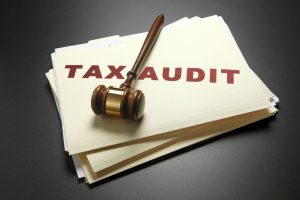In this comprehensive guide, we will explore the CHISQ.TEST formula in Microsoft Excel. The CHISQ.TEST formula is a statistical function that calculates the chi-square test for independence between two sets of data. This test is used to determine if there is a significant relationship between two categorical variables in a sample. By the end of this article, you will have a thorough understanding of the CHISQ.TEST formula, its syntax, examples, tips and tricks, common mistakes, and related formulae.
CHISQ.TEST Syntax
The syntax for the CHISQ.TEST formula in Excel is as follows:
=CHISQ.TEST(actual_range, expected_range)
Where:
- actual_range is the range of cells containing the observed frequencies. This is the data you have collected from your sample.
- expected_range is the range of cells containing the expected frequencies. These are the values you would expect to see if there was no relationship between the two categorical variables.
Both the actual_range and expected_range should be of the same size and shape, as they represent the same categories and groups.
CHISQ.TEST Examples
Let’s look at some examples of how to use the CHISQ.TEST formula in Excel.
Example 1: Suppose you have conducted a survey to determine if there is a relationship between the type of car a person owns (sedan, SUV, or truck) and their favorite type of music (pop, rock, or classical). You have collected the following data:
Actual frequencies (observed data):
- Sedan owners: 30 like pop, 20 like rock, and 10 like classical music.
- SUV owners: 25 like pop, 25 like rock, and 20 like classical music.
- Truck owners: 15 like pop, 30 like rock, and 25 like classical music.
Expected frequencies (assuming no relationship between car type and music preference):
- Sedan owners: 20 like pop, 20 like rock, and 20 like classical music.
- SUV owners: 20 like pop, 20 like rock, and 20 like classical music.
- Truck owners: 20 like pop, 20 like rock, and 20 like classical music.
To calculate the chi-square test statistic using the CHISQ.TEST formula, you would enter the following formula in Excel:
=CHISQ.TEST(A1:C3, A4:C6)
Where A1:C3 contains the actual frequencies and A4:C6 contains the expected frequencies. The result will be the chi-square test statistic, which you can compare to a critical value or use to calculate a p-value to determine if there is a significant relationship between car type and music preference.
CHISQ.TEST Tips & Tricks
- Ensure that both the actual_range and expected_range are of the same size and shape, as they represent the same categories and groups.
- Use the CHISQ.TEST formula in conjunction with other statistical functions, such as CHISQ.INV.RT or CHISQ.DIST.RT, to calculate p-values and make decisions about the significance of your results.
- Remember that the CHISQ.TEST formula is only appropriate for categorical data. If you are working with continuous data, consider using other statistical tests, such as the t-test or ANOVA.
- Keep in mind that the chi-square test assumes that your data meet certain conditions, such as having a large enough sample size and having expected frequencies greater than 5. If your data do not meet these assumptions, the results of the CHISQ.TEST formula may not be valid.
Common Mistakes When Using CHISQ.TEST
- Using the wrong ranges for actual_range and expected_range. Make sure you are using the correct data for each argument in the formula.
- Not meeting the assumptions of the chi-square test, such as having a large enough sample size or having expected frequencies greater than 5. If your data do not meet these assumptions, consider using a different statistical test or transforming your data.
- Interpreting the chi-square test statistic without comparing it to a critical value or calculating a p-value. The test statistic alone does not provide enough information to determine if there is a significant relationship between the two categorical variables.
Why Isn’t My CHISQ.TEST Working?
If you are experiencing issues with the CHISQ.TEST formula in Excel, consider the following troubleshooting tips:
- Check your formula syntax to ensure you have entered the correct arguments and cell ranges.
- Make sure your actual_range and expected_range are of the same size and shape, as they represent the same categories and groups.
- Ensure that your data meet the assumptions of the chi-square test, such as having a large enough sample size and having expected frequencies greater than 5.
- If you are still experiencing issues, consider using Excel’s built-in help feature or consulting online resources for additional guidance.
CHISQ.TEST: Related Formulae
Here are some related formulae that you may find useful when working with the CHISQ.TEST formula in Excel:
- CHISQ.INV.RT: Calculates the inverse of the right-tailed chi-square distribution, which can be used to determine critical values for hypothesis testing.
- CHISQ.DIST.RT: Calculates the right-tailed chi-square distribution, which can be used to determine p-values for hypothesis testing.
- CHISQ.DIST: Calculates the chi-square distribution for a given value and degrees of freedom, which can be used for hypothesis testing and goodness-of-fit tests.
- CHISQ.INV: Calculates the inverse of the chi-square distribution for a given probability and degrees of freedom, which can be used to determine critical values for hypothesis testing and goodness-of-fit tests.
- COUNTIFS: Counts the number of cells within a range that meet multiple criteria, which can be useful for calculating expected frequencies in contingency tables.
By understanding the CHISQ.TEST formula and its related functions, you can perform powerful statistical analyses in Excel to determine if there is a significant relationship between two categorical variables in your data.





